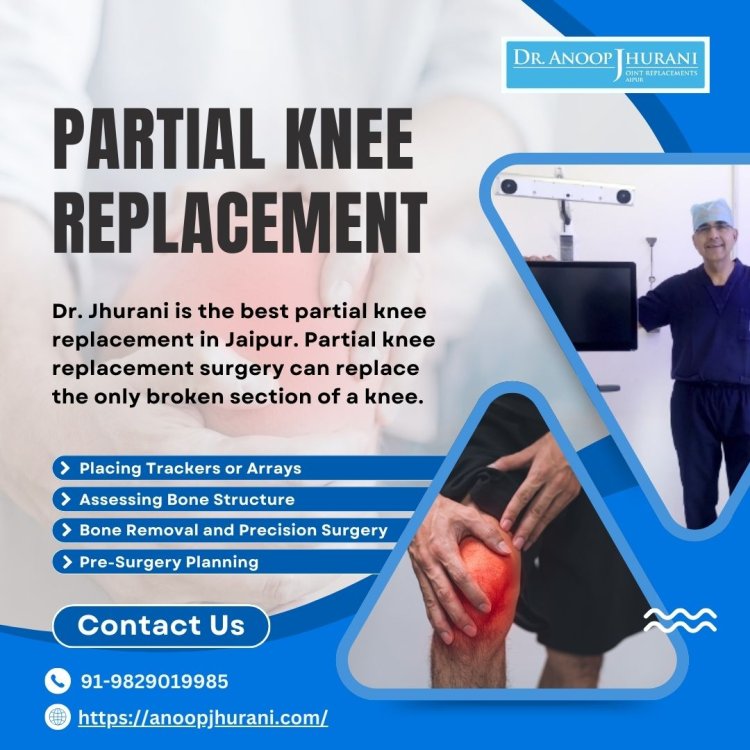Procedure for Partial Knee Replacement by Dr. Anoop Jhurani
Dr. Jhurani is the best partial knee replacement in Jaipur. Partial knee replacement surgery can replace the only broken section of a knee.
Share this Post to earn Money ( Upto ₹100 per 1000 Views )

Dr. Anoop Jhurani, renowned for performing over 12,000 successful knee and hip replacement surgeries, provides unparalleled care in Jaipur, Rajasthan. His expertise in using advanced technology, such as robotics and computer-assisted surgery, allows him to perform highly precise partial knee replacements. But what exactly does the procedure for a partial knee replacement entail? Let’s explore the step-by-step process and its benefits.
What is a Partial Knee Replacement?
Partial knee replacement is a surgical procedure designed to address damage in a specific part of the knee. This is ideal for patients with arthritis or localized damage, where only one compartment of the knee is affected. Unlike total knee replacement, which involves replacing the entire joint, a partial knee replacement focuses only on the damaged area, leaving the healthy bone and tissue intact. This approach leads to faster recovery times, less discomfort, and a quicker return to normal activities.
Step-by-Step Procedure for a Partial Knee Replacement
1. Pre-Surgery Planning and Customization: Before surgery begins, a detailed examination of the patient’s anatomy is conducted using advanced imaging techniques like CT scans. This allows the surgeon to customize the implant to perfectly fit the patient's unique knee structure. Pre-surgical planning helps ensure that the procedure is tailored to the individual’s specific needs, leading to better outcomes.
2. Placing Trackers or Arrays: Once the patient is prepared for surgery, small metal pins, known as "trackers" or "arrays," are placed around the leg. These trackers communicate with a computer system, allowing the surgeon to know the exact position and movement of the knee during surgery. This system ensures precision by monitoring the leg’s movement throughout the procedure.
3. Assessing Bone Structure and Ligament Tension: Next, the patient’s bone structure and overall anatomy are examined in detail. The surgeon evaluates the knee’s ligament tension by moving the joint through a series of specific movements. These movements help in identifying any areas that need adjustment. The mobility of the knee is closely observed to ensure proper alignment.
4. Creating a 3D Model of the Knee: Using the data gathered during the examination, a 3D model of the patient’s knee is generated. This model allows the surgeon to visualize how the knee will function after the replacement is completed. It provides crucial insights into how the replacement component will fit and function within the patient’s anatomy.
5. Bone Removal and Precision Surgery: The final stage of the procedure involves removing the damaged bone. The surgical team is guided by the pre-planned 3D model, with the robotic arm assisting in ensuring precise bone removal. The robotic arm is equipped with sensors that prevent the surgeon from straying outside the pre-defined boundaries, enhancing accuracy and minimizing the risk of complications.
Conclusion
Partial knee replacement is a minimally invasive procedure designed to treat localized knee damage while preserving healthy tissue. With the advanced robotic and computer-assisted technology utilized by Dr. Anoop Jhurani, patients experience quicker recovery times, reduced discomfort, and enhanced precision. If you're considering knee replacement surgery in Jaipur, consult Dr. Anoop Jhurani, a leading orthopedic surgeon, for a personalized and effective treatment plan.
















